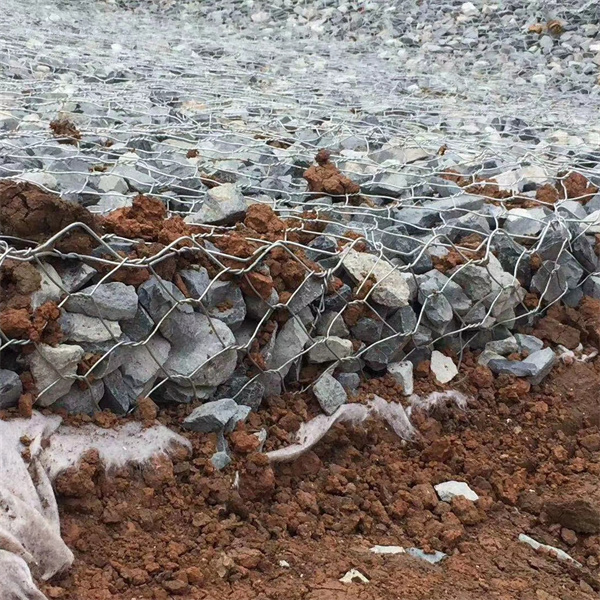Dec . 17, 2024 18:11 Back to list
high quality gabion architecture
The Art of High-Quality Gabion Architecture
Gabion architecture is a fascinating design approach that blends engineering, aesthetics, and sustainability. With an increasing focus on environmentally friendly structures, gabions have gained popularity due to their versatility and effectiveness in various applications. This article delves into the fundamentals of high-quality gabion architecture, highlighting its benefits, design principles, and practical applications.
What Are Gabions?
Gabions are wire mesh containers filled with materials, usually stones or rocks, that serve as building blocks for various construction projects. Their name derives from the Italian word gabbione, meaning big cage. They can range from small, decorative structures to massive retaining walls and erosion control systems. The use of natural materials not only enhances their aesthetic appeal but also promotes ecological harmony.
The Advantages of Gabion Structures
1. Sustainability Gabion walls are often made with locally sourced materials, reducing the carbon footprint associated with transportation. Furthermore, they promote biodiversity by allowing vegetation to grow between the stones, providing habitats for various species.
2. Cost-Effectiveness Constructing gabion structures can be more affordable than traditional building methods. The materials are typically inexpensive, and the labor required for installation is often minimal, especially for DIY projects.
3. Durability and Strength Gabion structures exhibit remarkable strength and durability. They can withstand harsh environmental conditions such as flooding, landslides, and erosion, making them ideal for use in challenging terrains.
4. Aesthetic Flexibility One of the striking features of gabions is their adaptability to various aesthetic styles. They can be designed to blend into natural landscapes or serve as bold architectural statements.
Design Principles for High-Quality Gabion Architecture
1. Site Assessment Before embarking on a gabion project, a thorough assessment of the site is crucial. Understanding the environmental conditions, soil type, and potential water flow will influence the design and materials chosen.
high quality gabion architecture

2. Material Selection The choice of materials is vital for the longevity and appearance of gabion structures. High-quality, durable stones should be used, and the wire mesh should be galvanized or coated to resist rust and corrosion.
3. Proportional Design Successful gabion architecture often relies on the principle of proportion. The sizes of stones used and the dimensions of the gabion baskets should be aesthetically pleasing and functional. Larger rocks can create a more dramatic effect, while smaller stones may result in a smoother appearance.
4. Drainage Considerations Proper drainage is essential in gabion design. Ensuring that water can flow freely through the structure will prevent the buildup of pressure that could lead to damage. The use of geotextile fabric can help manage drainage and prevent soil erosion.
5. Integration with Nature High-quality gabion architecture considers how the structure interacts with its surroundings. Designing with native plants and materials can create a seamless transition between man-made and natural environments.
Practical Applications of Gabion Architecture
1. Retaining Walls Gabions are often used to create retaining walls that stabilize slopes and prevent erosion. These walls can be both functional and visually appealing, enhancing the landscape.
2. Erosion Control Gabions effectively manage soil erosion along rivers, coastlines, and construction sites. Their porous nature allows water to flow through while maintaining structural integrity.
3. Landscaping Features Many designers use gabions to create unique landscaping elements, such as benches, fences, and fire pits. They can add texture and interest to gardens and public spaces.
4. Flood Control In areas prone to flooding, gabion structures can serve as barriers to redirect water flow, protecting property and infrastructure from water damage.
Conclusion
High-quality gabion architecture represents a unique synthesis of form and function. By leveraging the natural beauty of stones and the adaptability of wire mesh, gabion structures offer sustainable solutions for modern construction challenges. These versatile systems not only enhance the environment but also serve practical purposes in erosion control, landscaping, and flood management. As we continue to explore innovative building techniques, gabions prove to be a timeless and resourceful choice in the realm of architecture.
-
Visualizing Gabion 3D Integration in Urban Landscapes with Rendering
NewsJul.23,2025
-
The Design and Sustainability of Gabion Wire Mesh Panels
NewsJul.23,2025
-
The Acoustic Performance of Gabion Sound Barriers in Urban Environments
NewsJul.23,2025
-
Mastering the Installation of Galvanized Gabion Structures
NewsJul.23,2025
-
Gabion Boxes: Pioneering Sustainable Infrastructure Across the Globe
NewsJul.23,2025
-
Custom PVC Coated Gabion Boxes for Aesthetic Excellence
NewsJul.23,2025
-
Installation Tips for Gabion Wire Baskets in Erosion Control Projects
NewsJul.21,2025






